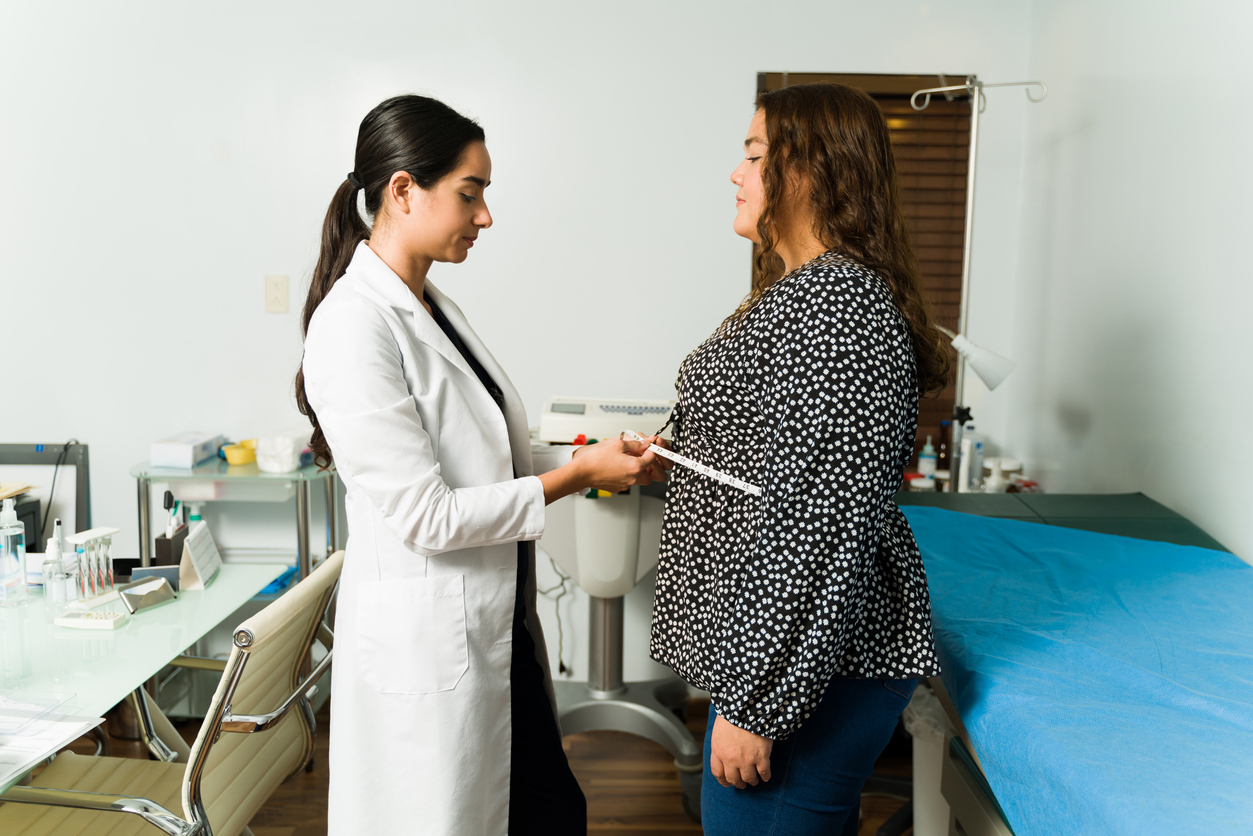Childhood and adolescent obesity are a complex and growing health concern influenced by many interconnected factors. Genetics, environment, lifestyle habits, and social pressures all play a role, making it more than just a matter of diet or exercise. Beyond the physical impact, obesity can also have a profound effect on mental health.
Adolescents who struggle with obesity are more likely to experience low self-esteem, depression, and anxiety, often worsened by stigma or bullying from peers. These emotional challenges can create a cycle that makes weight management even more difficult. However, with the right support and guidance, early intervention can help improve both physical and emotional well-being.
A Comprehensive Approach to Treatment
There is no one-size-fits-all solution for addressing obesity in children and teens. The most effective care plans are holistic, integrating nutrition, physical activity, and emotional well-being.
Healthcare professionals often recommend:
- Encouraging balanced eating habits that focus on whole, nutrient-rich foods.
- Promoting at least 60 minutes of moderate-to-vigorous physical activity most days of the week.
- Addressing emotional or behavioral patterns that contribute to overeating or inactivity.
For some adolescents, lifestyle changes alone may not be enough to achieve and maintain a healthy weight. In those cases, medication may be considered to complement existing strategies. One class of medications showing promising results is GLP-1 receptor agonists.
What Are GLP-1 Receptor Agonists?
GLP-1, short for glucagon-like peptide-1, is a hormone naturally produced by the body after eating. It helps regulate blood sugar, slows digestion so individuals feel full longer, and influences appetite.
GLP-1 receptor agonists are medications designed to mimic this natural hormone’s actions. They work by:
- Stimulating insulin release when blood sugar levels are high.
- Reducing glucagon, a hormone that raises blood sugar levels.
- Slowing digestion, which helps promote feelings of fullness and reduces hunger.
- Lowering overall appetite and cravings.
Currently, two GLP-1 medications—liraglutide (Saxenda) and semaglutide (Wegovy)—are approved by the U.S. Food and Drug Administration (FDA) for adolescents aged 12 years and older who meet one of the following criteria:
- A body mass index (BMI) at or above the 95th percentile for their age and sex, or
- A BMI of 27 or higher with at least one weight-related condition, such as type 2 diabetes or high blood pressure.
How Effective Are GLP-1 Medications?
Recent clinical studies have shown that GLP-1 medications can be effective for adolescents when used under medical supervision as part of a comprehensive treatment plan.
The SCALE TEENS Trial (liraglutide):
In this 56-week study, adolescents with obesity who received liraglutide showed a reduction in BMI and weight compared to those receiving a placebo.
- 43 percent of participants achieved a 5 percent or greater reduction in body weight (compared to 19 percent on placebo).
- 26 percent achieved a 10 percent or greater reduction in body weight.
The STEP TEENS Trial (semaglutide):
This 68-week study evaluated semaglutide and found even more significant results.
- Participants taking semaglutide experienced an average 16.1 percent reduction in BMI, compared to only 0.6 percent in the placebo group.
- 73 percent achieved a 5 percent or greater reduction in weight.
These outcomes suggest that GLP-1 medications can be an effective option for weight management in adolescents, especially when combined with healthy habits and regular medical monitoring.
Safety and Possible Side Effects
Like all medications, GLP-1 receptor agonists may cause side effects. Most are mild and temporary, typically affecting the digestive system. Common side effects include nausea, vomiting, diarrhea, constipation, or abdominal discomfort. These symptoms often lessen as the body adjusts to treatment.
Less frequent but more serious side effects may include:
- Pancreatitis (inflammation of the pancreas)
- Gallbladder disease
- Low blood sugar (particularly when combined with other diabetes medications)
- Mood changes, including rare reports of suicidal thoughts
GLP-1 medications are not recommended for individuals with a personal or family history of medullary thyroid carcinoma or multiple endocrine neoplasia type 2 (MEN2). They should also be discontinued if a patient becomes pregnant or plans to become pregnant.
Because each patient’s situation is unique, these medications should only be prescribed under the guidance of a healthcare professional who can provide ongoing monitoring and adjust treatment as needed.
Supporting Healthy Growth and Development
During adolescence, growth and development remain top priorities. Any weight management plan should ensure that nutritional needs are met and that growth is not compromised.
When GLP-1 medications are used safely under medical supervision, they have not been shown to negatively affect growth or development. Pediatricians closely monitor height, weight, nutrition, and overall progress throughout treatment to maintain a healthy balance.
In many cases, moderate and steady weight reduction can help improve blood pressure, insulin sensitivity, and overall well-being, setting the stage for better long-term health.
Is GLP-1 the Right Option for Your Teen?
GLP-1 medications can be a valuable tool for adolescents struggling with obesity, but they are not a quick fix. The best outcomes occur when these medications are combined with healthy eating, regular exercise, emotional support, and consistent follow-up care.
Families interested in learning more should discuss this option with a TopLine MD Alliance affiliated pediatrician. Together, families and physicians can determine whether this approach is appropriate and build a care plan that prioritizes long-term health and safety.
At the heart of every treatment decision is the goal of helping children and adolescents thrive physically, mentally, and emotionally. Whether through lifestyle changes, counseling, or medication, early intervention can make a meaningful difference in a child’s well-being and confidence.
The TopLine MD Alliance is an association of independent physicians and medical practice groups who are committed to providing a higher standard of healthcare services. The members of the TopLine MD Alliance have no legal or financial relationship with one another. The TopLine MD Alliance brand has no formal corporate, financial, or legal ties to any of the physicians or practice groups in the network.




